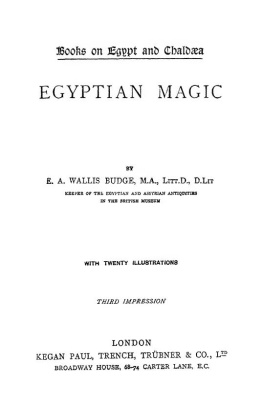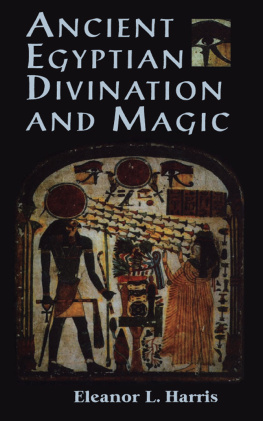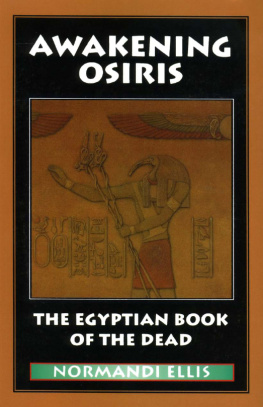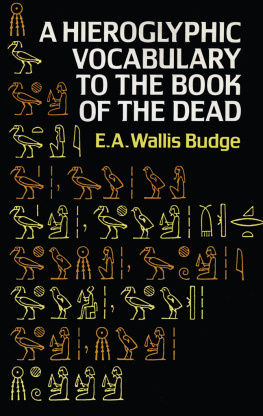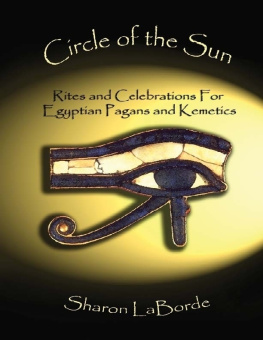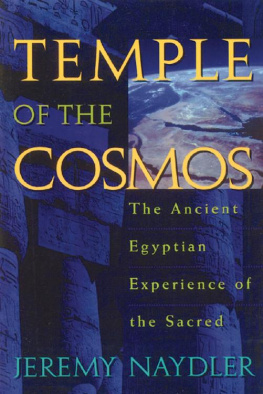Normandi Ellis - Imagining the World into Existence: An Ancient Egyptian Manual of Consciousness
Here you can read online Normandi Ellis - Imagining the World into Existence: An Ancient Egyptian Manual of Consciousness full text of the book (entire story) in english for free. Download pdf and epub, get meaning, cover and reviews about this ebook. year: 2012, publisher: Inner Traditions/Bear & Company, genre: Religion. Description of the work, (preface) as well as reviews are available. Best literature library LitArk.com created for fans of good reading and offers a wide selection of genres:
Romance novel
Science fiction
Adventure
Detective
Science
History
Home and family
Prose
Art
Politics
Computer
Non-fiction
Religion
Business
Children
Humor
Choose a favorite category and find really read worthwhile books. Enjoy immersion in the world of imagination, feel the emotions of the characters or learn something new for yourself, make an fascinating discovery.

- Book:Imagining the World into Existence: An Ancient Egyptian Manual of Consciousness
- Author:
- Publisher:Inner Traditions/Bear & Company
- Genre:
- Year:2012
- Rating:3 / 5
- Favourites:Add to favourites
- Your mark:
Imagining the World into Existence: An Ancient Egyptian Manual of Consciousness: summary, description and annotation
We offer to read an annotation, description, summary or preface (depends on what the author of the book "Imagining the World into Existence: An Ancient Egyptian Manual of Consciousness" wrote himself). If you haven't found the necessary information about the book — write in the comments, we will try to find it.
Reveals ancient Egyptian Mystery teachings on immaculate conception, transubstantiation, resurrection, and eternal life
Explores the shamanic journeys that ancient Egyptian priests used to view the unconscious and the afterlife
Provides the essential spiritual tools needed to return to Zep Tepi, the creative source
Drawing from the Egyptian Book of the Dead, the Pyramid texts, the Book of Thoth, and other sacred hieroglyphic writings spanning the three millennia of the Egyptian Mystery Traditions, Normandi Ellis reveals the magical language of creation and words of power that enabled the ancient Egyptians to act as co-creators with the gods.
Examining the power of hieroglyphic thinkinghow thoughts create realityand the multiple meanings behind every word of power, the author shows how, with the Neteru, we imagine the world into existence, casting a spell of consciousness over the material world. Uncovering the deep layers of meaning and symbol within the myths of the Egyptian gods and goddesses, Ellis investigates the shamanic journeys that ancient Egyptian priests used to view the unconscious and the afterlife and shares their initiations for immaculate conception, transubstantiation, resurrection, and eternal lifeinitiations that later became part of the Christian mystery school. Revealing the words of power used by these ancient priests/sorcerers, she explains how to search for the deeper, hidden truths beneath their spells and shows how ancient Egyptian consciousness holds the secret of life itself.
Revealing the initiatory secrets of the Osirian Mystery school, Ellis provides the essential teachings and shamanic tools needed to return to Zep Tepithe creative sourceas we face the transitional time of radical change currently at hand.
Normandi Ellis: author's other books
Who wrote Imagining the World into Existence: An Ancient Egyptian Manual of Consciousness? Find out the surname, the name of the author of the book and a list of all author's works by series.

